
Surgical technology is a vital field ensuring safe and effective surgical procedures, combining medical knowledge with technical skills, crucial in patient care and outcomes.
1.1 Overview of Surgical Technology
Surgical technology integrates medical knowledge and technical skills to ensure safe and effective surgical procedures. It involves preparing operating rooms, maintaining sterile environments, and assisting surgeons during operations. Surgical technologists play a critical role in patient care, requiring precision, attention to detail, and strong communication. The field demands a deep understanding of human anatomy, surgical instruments, and pharmacology. Education typically includes associate degree programs, with certification often required for professional practice. This foundation enables technologists to contribute effectively to surgical teams and patient outcomes.
1.2 The Role of the Surgical Technologist
The surgical technologist plays a pivotal role in surgical procedures, ensuring a safe and efficient environment. They prepare operating rooms, maintain sterile fields, and handle surgical instruments. Technologists assist surgeons and anesthesiologists, monitor equipment, and manage supplies. Their duties include patient preparation, draping, and maintaining precise documentation. Strong communication and technical skills are essential, as they work collaboratively with healthcare teams to ensure optimal patient outcomes.
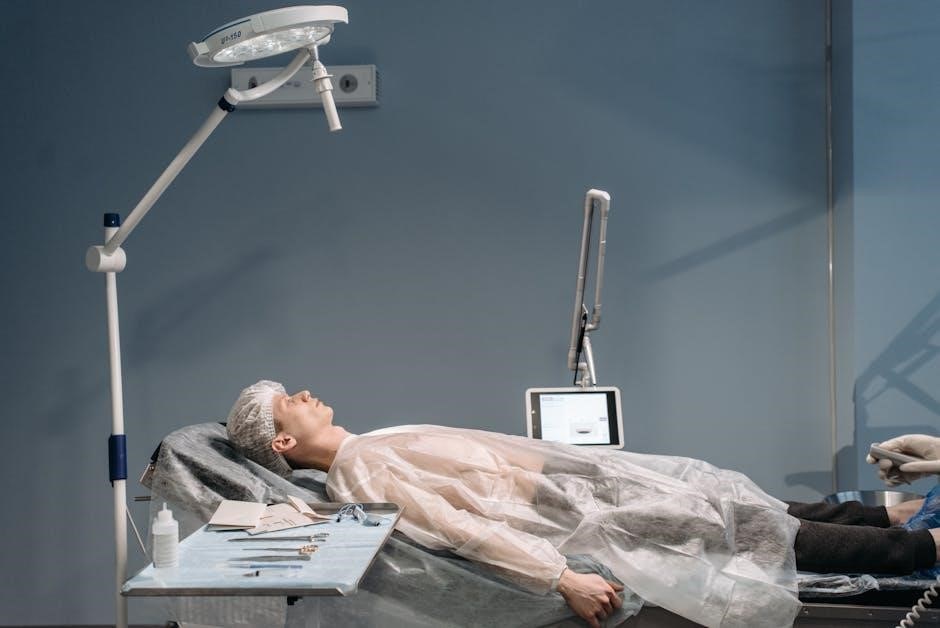
Core Curriculum for Surgical Technology
The curriculum includes courses in pharmacology, microbiology, and surgical technology, with clinical training to develop skills in patient preparation, aseptic techniques, and surgical instrument handling.
2.1 Courses and Credit Requirements
The curriculum includes courses like SUR 117 Pharmacology for Surgical Technologists, BIO 216 General Microbiology, SUR 114 Surgical Technology I, and SUR 123 Surgical Technology II. Credits range from 2 to 16 per course, with a total of 65 credits required for the AAS degree. These courses provide foundational knowledge in anatomy, physiology, and surgical practices, ensuring students gain both theoretical and practical skills essential for certification and entry-level positions in surgical technology.
2.2 Key Competencies and Skills
Surgical technologists must possess manual dexterity, coordination, and the ability to perform precise movements. They need strong knowledge of surgical instruments, equipment, and aseptic techniques to ensure patient safety. Effective communication and teamwork skills are essential for collaborating with surgeons and nurses. Proficiency in preparing the surgical site, handling tissues, and maintaining a sterile environment is critical. These competencies ensure efficient and safe surgical procedures, reflecting the high standards required in this field.
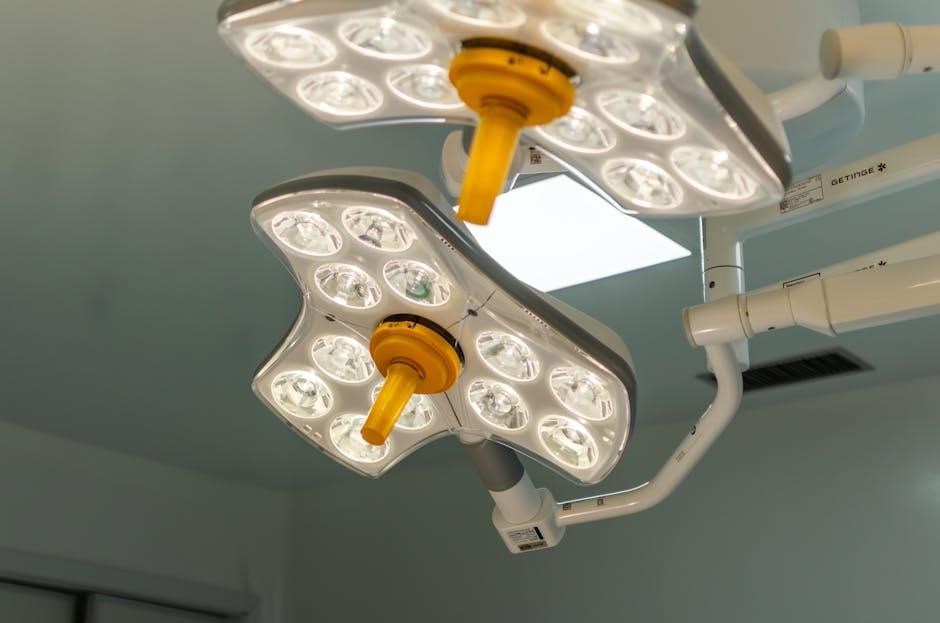
Surgical Technologist Education and Training
Surgical technologists typically earn an associate degree, completing courses in anatomy, pharmacology, and aseptic techniques. Training includes clinical practice to master surgical procedures and patient safety protocols.
3.1 Associate Degree Programs
Surgical technologist associate degree programs provide comprehensive training, combining classroom instruction with clinical practice. These programs typically include courses in anatomy, pharmacology, and surgical techniques. Students learn to prepare operating rooms, sterilize equipment, and assist during surgeries. The curriculum is designed to meet national certification standards, with programs accredited by organizations like CAAHEP. Graduates are prepared to take the National Certification Examination and work as entry-level surgical technologists in various healthcare settings.
3.2 Certification Requirements
Certification is often required for surgical technologists to practice, typically obtained by passing the National Certification Examination administered by the NBSTSA. This credential demonstrates competency and is increasingly mandated by employers and states. While not all states require certification, it significantly enhances career opportunities and professional credibility. The certification process involves meeting educational and clinical requirements, with the successful candidate earning the title of Certified Surgical Technologist (CST). Renewal requires ongoing education and adherence to professional standards.
Surgical Technologist Responsibilities
Surgical technologists prepare surgical sites, maintain sterile environments, and assist surgeons by passing instruments and managing equipment, ensuring efficient and safe surgical procedures.
4.1 Preoperative Duties
Surgical technologists prepare for surgery by sterilizing equipment, arranging instruments, and ensuring the operating room is ready. They assist with patient positioning, draping, and maintaining asepsis. Preoperative duties also include verifying surgical supplies, checking equipment functionality, and preparing the surgical site according to procedure. These tasks ensure a smooth transition into the surgical procedure, maintaining patient safety and efficiency in the operating room environment.
4.2 Intraoperative Duties
During surgery, surgical technologists pass instruments, handle tissues, and manage supplies. They maintain the sterile field, assist the surgical team, and monitor equipment. Their role includes anticipating the surgeon’s needs, ensuring efficient workflow, and adhering to aseptic technique. Intraoperative duties require precision, focus, and teamwork to support the surgical process effectively, ensuring patient safety and procedural success in the operating room environment.
4.3 Postoperative Duties
Postoperative duties involve cleaning and disinfecting equipment, restocking supplies, and preparing the operating room for the next procedure. Technologists also assist with patient care, such as applying dressings or handling specimens. They ensure all instruments are properly sterilized and stored. Efficient postoperative management is critical for maintaining hygiene, reducing contamination risks, and ensuring the operating room is ready for subsequent surgeries, promoting a seamless workflow and patient safety.
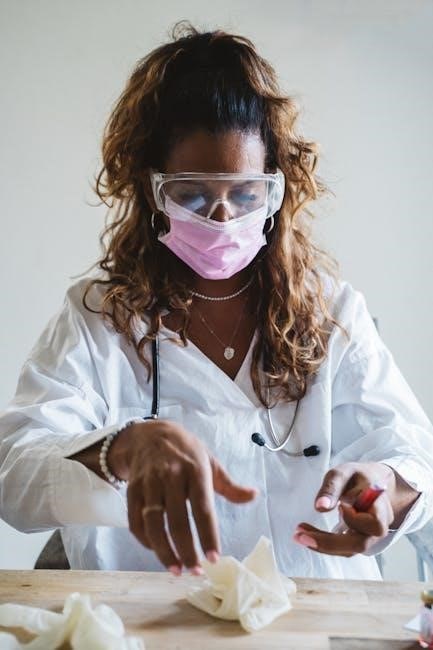
Essential Skills for Surgical Technologists
Essential skills include technical proficiency, manual dexterity, attention to detail, teamwork, and physical stamina. Adaptability and focus are crucial in dynamic surgical environments.
5.1 Manual Dexterity and Coordination
Manual dexterity and coordination are critical skills for surgical technologists, enabling precise handling of instruments and equipment. These abilities ensure efficient setup of sterile fields and smooth instrument passage during procedures. Strong hand-eye coordination allows technologists to maintain focus and accuracy in high-pressure environments, directly impacting patient safety and surgical success. Proficiency in these areas is developed through rigorous training and hands-on practice, making them indispensable for effective surgical assistance and overall patient care.
5.2 Knowledge of Surgical Instruments
Knowledge of surgical instruments is essential for technologists to ensure proper handling, identification, and use during procedures. Understanding instrument types, their purposes, and maintenance is critical. This expertise allows technologists to anticipate surgeons’ needs, manage equipment efficiently, and maintain a sterile environment. Proficiency in identifying instruments by sight and feel enables seamless coordination during surgeries, enhancing patient safety and operational effectiveness. Staying updated on new technologies and tools is vital for providing optimal surgical support and care.
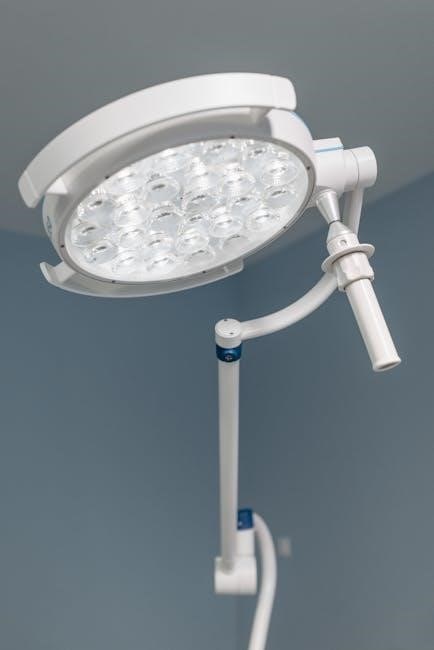
Pharmacology for Surgical Technologists
Pharmacology is fundamental for surgical technologists to understand medications used in surgery, their effects, and safe handling, ensuring patient safety and effective surgical support.
6.1 Medications Commonly Used in Surgery
Surgical technologists must understand medications like anesthetics, antibiotics, and muscle relaxants. Anesthetics induce unconsciousness, while antibiotics prevent infection. Muscle relaxants facilitate procedures by reducing movement. These drugs are critical for patient safety and surgical success, requiring precise handling and storage. Understanding their effects and interactions ensures proper assistance during surgery. Surgical technologists must also be aware of potential allergic reactions and consult with anesthesiologists to ensure safe medication administration, maintaining patient well-being throughout the procedure.
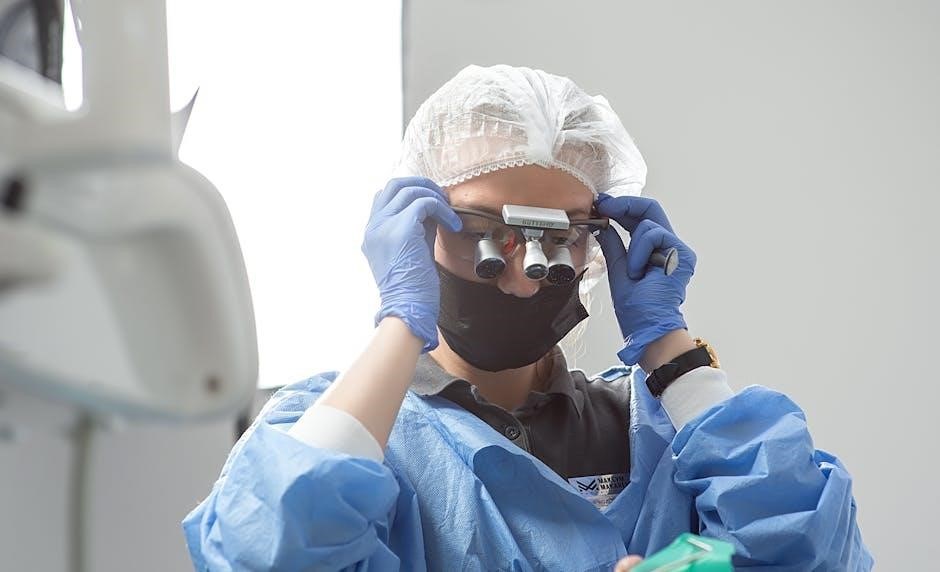
Aseptic Technique and Sterilization
Aseptic technique and sterilization are critical to preventing surgical infections. These practices involve handwashing, sterilizing equipment, and maintaining a sterile environment to ensure patient safety during procedures.
7.1 Principles of Aseptic Technique
Aseptic technique involves practices that eliminate or minimize the presence of microorganisms in surgical environments. Key principles include proper hand hygiene, use of sterile gloves and gowns, and maintaining a sterile field. Instruments and supplies must be sterilized before use, and handling should be done with precision to avoid contamination. These practices are essential for reducing the risk of surgical site infections and ensuring patient safety during procedures.
7.2 Sterilization Methods
Sterilization methods in surgical technology include steam sterilization, chemical sterilization, and dry heat sterilization. Steam sterilization is the most common, using high-pressure steam to kill microorganisms. Chemical methods, like ethylene oxide, are used for heat-sensitive equipment. Dry heat sterilization involves high temperatures over extended periods. Proper packaging and monitoring ensure effectiveness. These methods are critical for maintaining sterile environments and preventing infections, adhering to strict protocols to ensure all equipment is safe for patient use during surgical procedures.
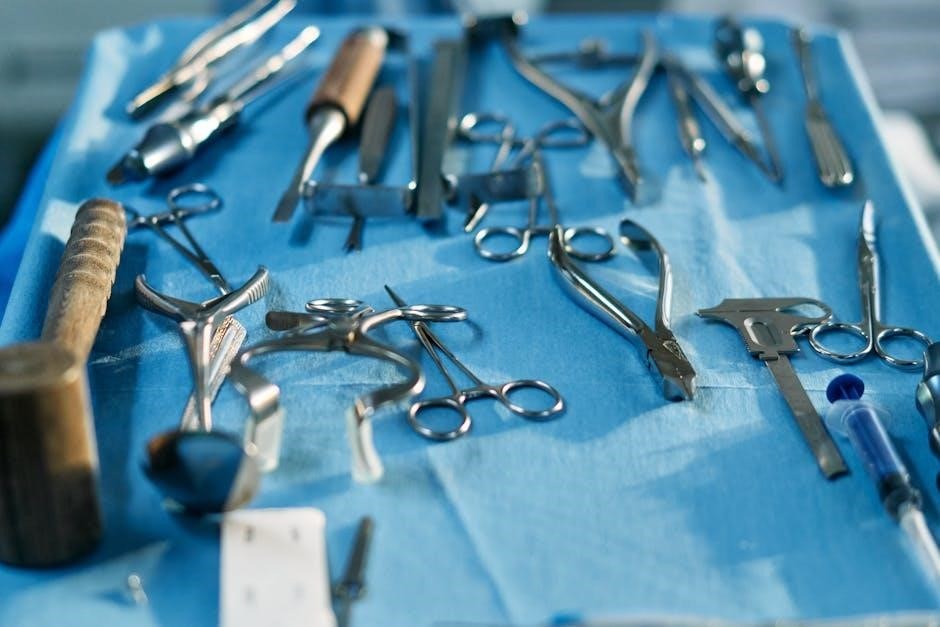
Patient Preparation and Safety
Patient preparation involves assessing medical history, educating on procedures, and ensuring physical readiness. Safety protocols include proper positioning, monitoring vital signs, and maintaining aseptic conditions to prevent complications.
8.1 Preparing the Surgical Site
Preparing the surgical site involves cleaning, disinfecting, and draping the area to ensure a sterile environment. This process minimizes infection risks and maintains patient safety. Surgical technologists play a key role in this step, adhering to strict aseptic protocols. Proper site preparation includes assessing the area, removing hair if necessary, and applying antimicrobial solutions. Effective draping with sterile materials isolates the surgical site, creating a safe zone for the procedure. Attention to detail is critical to prevent complications and ensure optimal surgical outcomes.
8.2 Ensuring Patient Safety
Ensuring patient safety is a top priority in surgical technology. This involves evaluating the patient preoperatively, maintaining a sterile environment, and monitoring vital signs during procedures. Surgical technologists must handle instruments and supplies safely, preventing contamination and ensuring proper use. They also assist in positioning patients correctly to avoid injuries and promote comfort. By adhering to established protocols and staying vigilant, surgical technologists play a crucial role in minimizing risks and safeguarding patient well-being throughout the surgical process.
Surgical Equipment and Instruments
Surgical equipment and instruments are essential tools for surgical technologists, enabling precise procedures and patient care. They include retractors, forceps, scalpels, and suction devices, ensuring efficient operations.
9.1 Common Surgical Instruments
Common surgical instruments include retractors, forceps, scalpels, suction devices, and electrosurgical tools. These instruments are essential for various procedures, ensuring precision and efficiency. They are typically made of high-quality materials like stainless steel or titanium, designed for durability and sterility. Surgical technologists must understand their functions, proper handling, and maintenance to support surgeons effectively during operations. These tools are vital for patient care and successful surgical outcomes, requiring meticulous preparation and organization.
9.2 Operating Room Equipment
Operating room equipment includes essential tools like surgical lights, anesthesia machines, ventilators, and electrosurgical units. These devices are critical for maintaining patient safety and enabling precise surgical procedures. Surgical technologists must be familiar with their setup, operation, and maintenance to ensure smooth workflows. Proper functioning of this equipment is vital for patient monitoring, infection control, and efficient surgical outcomes, making it a cornerstone of modern surgical care and education in surgical technology programs.
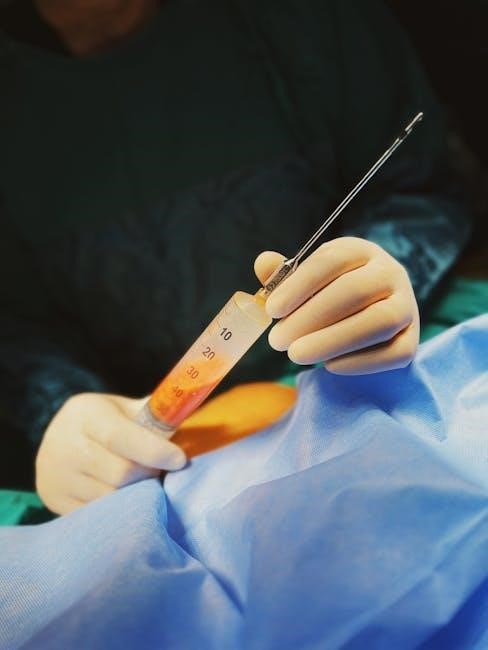
Certification and Professional Development
Certification as a surgical technologist is crucial for career advancement, demonstrating expertise, and ensuring patient safety through standardized competencies and continuous professional growth in the field.
10.1 National Certification Examination
The National Certification Examination for Surgical Technologists is administered by the NBSTSA, ensuring standardized competencies. Eligibility typically requires completion of an accredited program or equivalent clinical hours. The exam assesses knowledge in anatomy, pharmacology, and surgical procedures, confirming a technologist’s ability to perform safely and effectively. Certification enhances career opportunities and demonstrates commitment to professional excellence, with periodic renewal requirements to maintain credentials and stay updated on industry advancements.
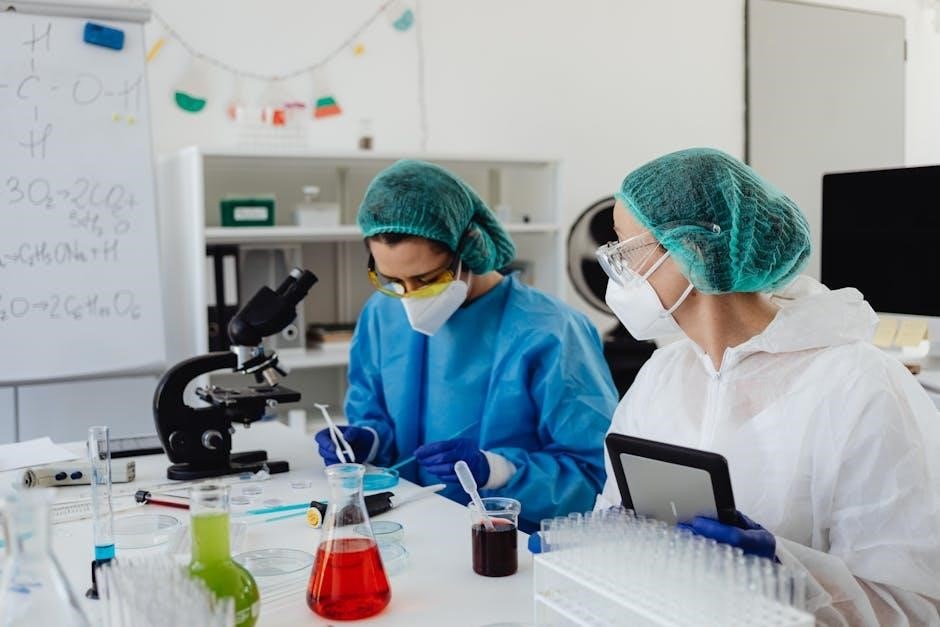
The Future of Surgical Technology
Advances in surgical technology are transforming patient care, enhancing precision, and integrating innovative tools, while expanding the surgical technologist’s role and educational requirements in modern healthcare settings.
11.1 Advances in Surgical Technology
Advances in surgical technology are revolutionizing healthcare, with innovations like robotic-assisted surgeries, AI-driven tools, and minimally invasive techniques improving precision and patient outcomes. These technologies enable surgeons to perform complex procedures with greater accuracy, reducing recovery times and complications. Additionally, the integration of advanced imaging and real-time data analysis enhances decision-making during operations. Such advancements are reshaping the field, requiring surgical technologists to stay updated with cutting-edge equipment and methodologies to meet the evolving demands of modern surgical care.

The Importance of the Surgical Technologist’s Role
The surgical technologist plays a critical role in ensuring the safety and efficiency of surgical procedures. They are integral members of the surgical team, responsible for maintaining a sterile environment, preparing operating rooms, and assisting surgeons and nurses. Their attention to detail and expertise in handling instruments and equipment directly impact patient outcomes. The surgical technologist’s role is vital in upholding the highest standards of care, making them indispensable in modern healthcare settings.